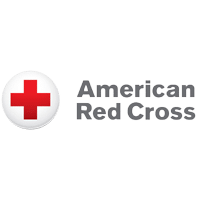No products in the cart.
Uncategorized
Comprehensive Guide to Agonal Breathing
Agonal Breathing Definition
Agonal breathing, also known as agonal respirations, refers to a type of breathing that is not sufficient and may sound like snoring, snorting, gasping, or struggling to breathe. When someone is experiencing agonal breathing, they may seem like they are choking or making involuntary gasping sounds. Agonal breathing is not normal breathing and often indicates a serious medical emergency like cardiac arrest.During sudden cardiac arrest, a person may exhibit agonal breathing for a few seconds to several minutes after their heart stops beating. It’s important to understand that agonal breathing is not the same as regular breathing and requires immediate action. It’s crucial to know what steps to take when you encounter someone experiencing agonal breathing.What Does Agonal Breathing Look Like?
As mentioned before, agonal breathing consists of short gasps of air. It’s crucial to understand that agonal respirations are not normal breathing and can be described as unusual, shallow half-breaths. The sound of agonal breathing is similar to snorting or struggling to breathe.When someone is experiencing agonal breathing due to cardiac arrest, they will be unconscious and unresponsive. It is extremely important to recognize that agonal breathing is not the same as regular breathing and to take immediate action to help someone in cardiac arrest.What Causes Agonal Breathing?
Even though agonal respirations may resemble a problem with breathing, they can actually be caused by issues with the heart, such as cardiac arrest. During cardiac arrest, the heart stops beating effectively due to problems in its electrical system. This means that the heart cannot pump oxygen throughout the body. Agonal breathing occurs in around 40% of people experiencing sudden cardiac arrest when the lower part of the brain doesn’t receive enough oxygen and triggers involuntary breathing reflexes.
Agonal breathing can’t be consistently described using just one word, but terms like snoring, gasping, snorting, or deep breathing can be used to describe these abnormal breaths.
Other conditions and emergencies that can lead to agonal breathing include cerebral ischemia and hemorrhagic stroke. In these situations, blood flow to the brain is restricted, causing the body to try desperately to take in oxygen through involuntary agonal breathing reflexes.
How to Respond to Agonal Breathing
If you see someone showing agonal respirations and they are not responsive, it’s important to take immediate action using the “Call-Push-Shock” approach, which involves three steps:
Call 911: Dial emergency services right away and let them know about the situation. They can provide further instructions and send help.
Perform hands-only CPR: Start by placing the heel of your hand on the center of the person’s chest. Then, push down hard and fast at a steady rhythm. This helps circulate blood and deliver oxygen to vital organs. Remember, you don’t need to give rescue breaths, just focus on pushing down on the chest.
Use an AED (Automated External Defibrillator), if available: An AED is a device that can analyze the heart’s rhythm and deliver an electric shock if needed. Follow the instructions provided with the AED, attach the pads to the person’s chest, and follow the voice prompts.

The first and most important step is to call an ambulance right away. Agonal breathing is a sign of a serious medical condition that requires urgent attention. By acting quickly, you can help save a person’s life.
After you’ve called for help, start performing CPR immediately and use an AED if one is available. Studies have shown that people who experience agonal breathing during cardiac arrest have a better chance of survival if they receive prompt CPR and defibrillation.
Remember, the key is to act swiftly and get professional medical assistance as soon as possible.
CPR
The most important thing to do is call an ambulance right away. Agonal breathing means there is a serious medical problem that needs urgent attention. Acting quickly can help save someone’s life.
Once you’ve called for help, start doing CPR right away and use an AED if you have one. Studies show that people who have agonal breathing during a heart attack have a better chance of surviving if they get CPR and defibrillation quickly.

AED
Automated external defibrillators (AEDs) can read the heart’s rhythm and, if someone is experiencing a dangerous heart rhythm during cardiac arrest, the AED will deliver a safe shock to restart their heart. This shock can help the heart start beating normally again, which can save a person’s life. You don’t need to be a medical expert to use an AED. The device provides audio instructions and guides you through the process step by step.

Additional Treatment for Agonal Breathing
Agonal breathing is a serious condition and paramedics will treat it at the location where it occurs. They will take charge of performing CPR and may use an AED machine if needed, depending on the patient’s condition. These treatments are very important for someone experiencing sudden cardiac arrest because the shocks from an AED are the only way to restart the heart when it has a dangerous rhythm. If oxygen is still not reaching the body properly, the medics may need to provide additional breathing support. They may also give medications to address the underlying cause of agonal breathing.
Frequently Asked Questions About Agonal Breathing
What is the Difference between Agonal Gasps and a Seizure?
Agonal gasps are involuntary and inadequate breaths that happen when there is low oxygen in the blood, which is called hypoxia. This type of breathing is not normal and usually means that someone is close to dying. Agonal breaths may be accompanied by shaking or other muscle movements as the body struggles to get enough oxygen. The sound of agonal breathing can be like snoring, snorting, gasping, or deep breathing.
On the other hand, seizures happen when there is unusual electrical activity in the brain. There are different types of seizures, and depending on the type, people may have uncontrollable, jerky movements of their body, especially their arms and legs. They might also experience stiffening and then relaxing of their limbs or muscles, loss of awareness, staring into space, confusion, sweating, feeling nauseous, or rapid blinking.
Since cardiac arrest victims might show unusual movements too, it’s important not to mistakenly think that a cardiac arrest is a seizure. Waiting to respond can greatly reduce the person’s chances of survival. If someone is unresponsive and not breathing normally, immediately call 911, start hands-only CPR, and use an AED if you have one.
Are Athletes at Risk for Agonal Breathing?
Cardiac arrest can happen to anyone, including athletes who are typically considered healthy. Surprisingly, exercise can actually increase the risk of cardiac arrest, even though it is beneficial for overall health.
During exercise, athletes of all ages can experience cardiac arrest. If you witness someone collapsing suddenly on the field or court, particularly if it’s not due to an injury, assume it is a cardiac arrest. If the person is unconscious or not responsive, start CPR right away because agonal breathing or irregular breathing patterns can often occur in athletes. Taking quick action can potentially save a life.





